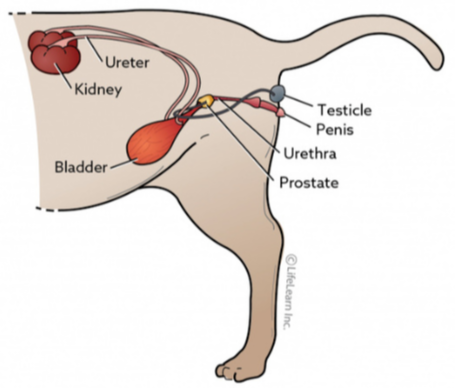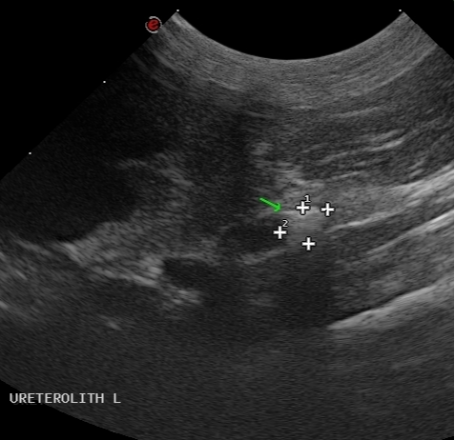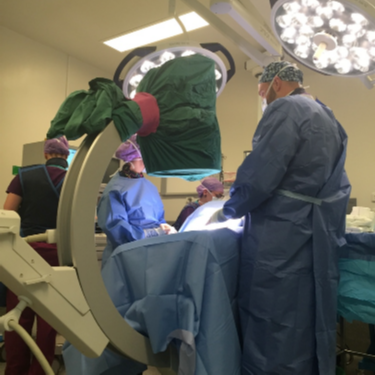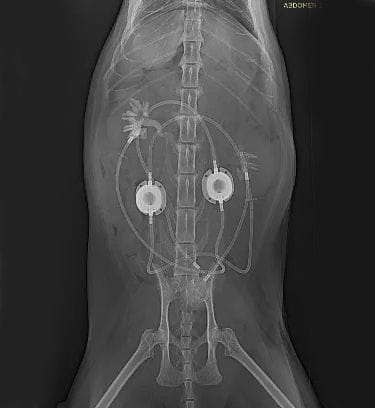In a normal cat, urine is produced in the kidneys and filters through into a collecting pool of the kidney called the "renal pelvis" before flowing down a tube called the ureter into the urinary bladder.
Ureteral obstructions occur when a blockage in the ureter prevents drainage of urine. Obstruction of urine flow can severely damage the kidneys.
Ureteral obstructions occur due to stones, blood clots or pus associated with infection. Other causes include ureteral strictures (scars) or ureteral cancer (this is rare).
The most common cause of ureteral obstruction in cats are due to kidney stones that move into and block the ureter. Stone formation accounts for approximately 80% of ureteral obstructions. Ureteral strictures or ureteral scars are the second most common cause and some patients have both. Most (>90%) stones are a type called calcium oxalate.
Ureteral obstructions may be partial or complete and involving one or both kidneys. If obstructions occur on both sides, life-threatening kidney failure can occur. Complete obstruction of both kidneys would be fatal within 48-72 hours if left untreated. Partial ureteral obstructions typically cause less severe damage to the kidneys and patients may achieve a greater return to function after relief of the obstruction.
Not only are stones the most common cause of ureteral obstruction, they also can serve as a risk for infection, leading to chronic urinary tract infections which can further complicate treatment.
Some patients have no clinical signs, especially if the non-obstructed kidney has normal function or if the obstruction is partial. Patients with obstructions on both sides have more severe signs. Possible signs include inappetence, vomiting, lethargy, weight loss, increased thirst and urination and straining to urinate.
Ultrasound is essential in identification of ureteral obstruction as the obstruction causes changes including enlarged kidneys, dilation of the ureters or urine draining portion of the kidney (renal pelvis) and bright tissue surrounding the kidneys. The stones themselves maybe seen with ultrasound, xray or sometimes a CT scan.







